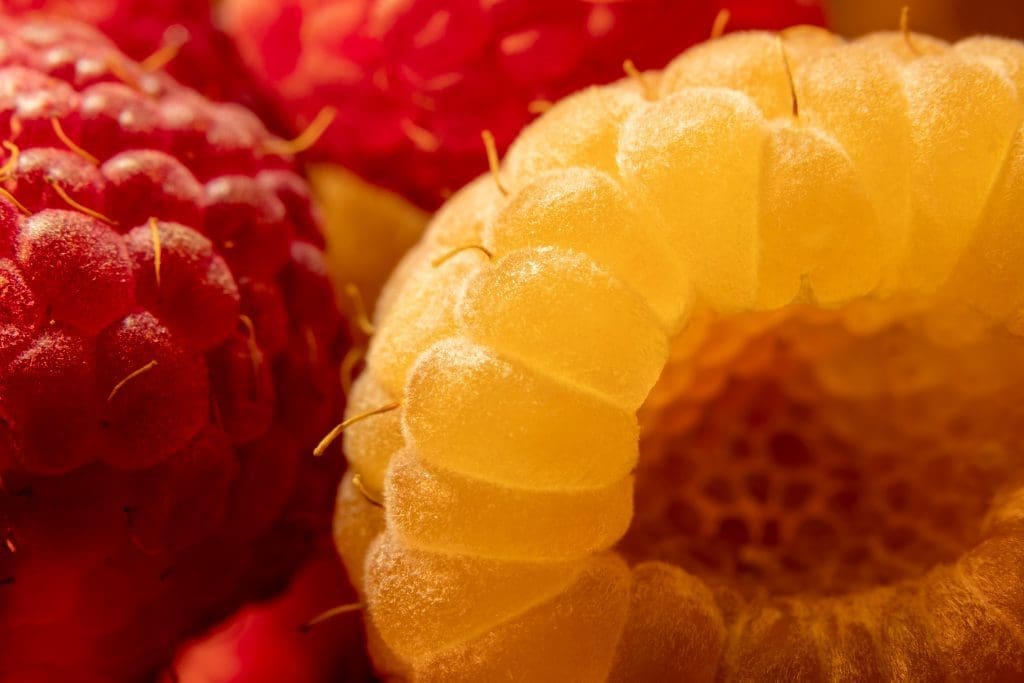Food photography is a trendy genre. There are plenty of food photos on social media, culinary blogs, and lifestyle magazines. Stock photo libraries also provide a wide variety of photographs of food. But are they as diverse and unique as you might think? Probably not. The truth is that many of them are taken from the same angles (e.g., above the subject, 75-degree and 25-degree angles), use the same plain backgrounds, and have similar compositions.
Food photographers play safe because food photography is a commercial genre, and they choose to promote the product to create a story. Furthermore, they usually follow a brief approved by the client or go for the most popular trends of the moment. If you choose an artistic approach and focus on storytelling, food can be as good a subject matter for fine-art photography as any other subject. Create unusual, unique compositions even if they don’t follow the rules of food photography.
Make the main subject stand out
Creating a significant difference between the subject and the rest of the frame makes the subject stand out and capture the viewer’s attention. But there are many other methods than using a white background or photographing the food from above.
Use a shallow depth of field to blur the background and create contrast. The subject will be sharp and sharp, while the environment will be blurred. You can use this method to hide a busy or unpleasant background. At the same time, you allow some context into the frame. Even blurred, the background is there and completes the frame.
You can use other types of contrast as well. Color contrast will make the subject pop, while color saturation contrast adds emotions and contributes to the narrative. Abstract contrast also enriches the story by adding context. For example, you can create a distinction between fresh and rotten, modern and traditional, young and old, poverty and richness, and so on.
Try macro photography
Instead of the usual compositions, get very close to your subject and fill the frame with its most interesting details. You don’t have to frame the entire subject; choose the best part of it. Use macro lenses for clarity and manual focus for precision. A tripod is also helpful for avoiding camera shake and allowing you longer exposures. For more information on macro photography check out this article.
Photo by Bruno Scramgnon from Pexels
Explore minimalism
Sometimes less is more. Using a large area of negative space individualizes the subject and enhances its importance. For example, you can photograph a single blackberry, a scoop of ice cream, or one anise seed. Choose analogous colors to create an atmosphere and blend everything in with smooth light. To increase the effect, use vintage plates or glasses, objects with history and attitude.
Work with leading lines
Leading lines capture the viewer’s attention and guide them through the frame. Take some time to observe the natural lines of your subject, whether they come from shape, texture, or color. Then imagine how you would like to visually pass from one element to another and compose the scene using the existing lines. Use other kitchen items to emphasize lines and create more interesting compositions.
Use natural backgrounds
It’s easier to work with a plain, artificial background, but the natural ones add context and create an atmosphere. Move your photo session outside and photograph the food in the garden, using sunlight, and revealing natural colors. A blue sky or your balcony flowers may be the best backgrounds you can find.
Photo by Timotej Nagy from Pexels
Food photography can be fun and exciting, but only if you do what you like and allow yourself to enjoy the process. Even commissioned jobs should be treated with creativity and enthusiasm. Food is a natural subject matter, and you should find a realistic and complete perspective.
Cover photo by Eugen Buzuk from Pexels

